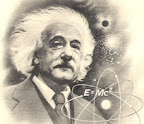The movement of small particles in a fluid as they collide with the fluid’s molecules are known as Brownian Movemnets. Microscopic particles in liquid or gas undergo Brownian motion – jittery, random movements that are the result of countless collisions with neighbouring molecules.
Details of Brownian Motion
 In the year 1907 Albert Einstein studied this motion and predicted that a microscopic particle’s kinetic energy and thus the square of its velocity should be proportional to the temperature of its surroundings.
In the year 1907 Albert Einstein studied this motion and predicted that a microscopic particle’s kinetic energy and thus the square of its velocity should be proportional to the temperature of its surroundings.
If the position of a particle can be rapidly measured, then it may be possible to measure its speed before turning it off before collision.
But Einstein predicted that the short-term scale between the conflicts would make these measurements “impossible”.
In Austin, a team from Texas University found a way to do this at least in the air. The density of the air is less than the water, so the collision is low and the microscopic particles change direction on a long-scale scale. To measure the velocity, the team used two laser beams to trap a dust-shaped, 3-micromarm-wide glass pearl in the mid-air.
By measuring how much the laser light was taken by glass beads, the team could measure many of the particles’ conditions before the collision, before the collision was closed.
These position measures enabled them to get a measure of the velocity of every 5 microsounds and demonstrated directly that the Equipartition Theorem holds.
But directly testing this idea, which is called equipartition theorem, is difficult for Brownian particles to do.
This is because with many conflicts experienced by the particle, it changes speed and direction very quickly.
It is definitely an important achievement to be able to measure the pace of Brownian particle at these fixed times.
It is now possible to track individual particles with much more time and spatial resolution, but only limited at the end how many photons can interact with particles per second.
What a wonderful blog. I invest hours on the internet reading blogs, about tons of different subjects. I have to to begin with give kudos to whoever created your web site and second of all to you for writing what i can only describe as an post. I honestly believe there is a skill to writing articles that only several posses and to be truthful you have it. The combination of informative and quality content is definitely very rare with the big quantity of blogs on the internet.